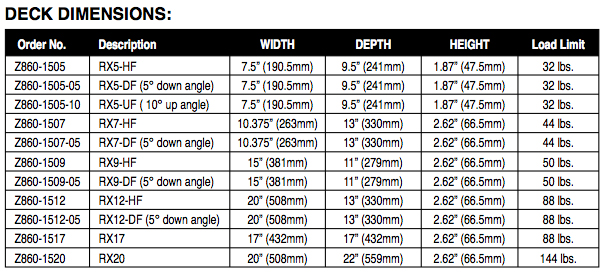Description
Designed for nearfield monitors, the Primacoustic Recoil Stabilizer™ is a unique speaker mounting device that at once eliminates disruptive resonant coupling from the loudspeaker to the stand, while providing a stable base that reduces the recoil caused by the forward energy of the loudspeaker motion.
The Recoil Stabilizer is a loudspeaker platform that combines three basic
components: a high-density urethane foam base to isolate the speaker from the shelf, monitor-bridge or stand; a heavy ¼” laser-cut steel plate; and a thin neoprene top surface. The foam effectively decouples the loudspeaker to eliminate vibration-borne resonance that invariably introduces phase anomalies, while the steel plate introduces significant mass to the structure, stabilizing the speaker. The no-slip surface coats the top to ensure the monitor stays firmly in place.
By reducing the backward 'recoil' as the speaker coil pushes energy forward, the initial transient no longer suffers lag and the sharpness of the resulting impulse is more defined. Upon first listening, one immediately notices more punch and extended low end. Upon further listening, one begins to notice greater detail at all frequencies, improved transient response and more defined depth of field. This not only makes mixing easier, but since the Recoils eliminate unknown resonance from contaminating the sound, your mixes immediately translate better to other rooms and audio systems.
The Recoil Stabilizer is available in various sizes, weights and firing angles to address the vast array of speaker designs currently on the market and personal mounting preferences. To make selection easy, we have produced a simple cross-reference chart to match the right Recoil Stabilizer for your monitors.
Features
- Improves transient response and imaging
- Tightens up the bass for greater accuracy
- Eliminates resonance and phase anomalies
- Improves translation to other audio systems

How To Select A Recoil Stabilizer
Recoil Stabilizers are available in a wide variety of sizes and weights to properly match the many different near field monitors in use today. This is augmented with a choice of firing angles to suit the various mounting requirements along with a choice of ‘portrait’ or ‘landscape’ footprints to address personal monitoring preferences.
As a rule, the tweeters in your monitors should be firing at ear height. It is important to note that the Recoils are approximately 2" (5cm) thick. So if you have your monitors on a meter bridge, adding Recoils will elevate your monitors slightly. If on the other hand you have adjustable stands, then the HF – horizontal fire will likely be a good choice.
After extensive listening tests, we have found that a 4:1 ratio is the minimum mass required to properly stabilize a monitor. So if you have a near field monitor that weighs 20lbs (8kg), you would select a Recoil that has a mass that is no less than ¼ the weight or 5lbs (2kg). To make selection as easy as possible, we have also provided a cross reference that is sorted by manufacturer and model.
A handy reference table is available here for selecting the right stabilizer!
The Three Basic Firing Angles
- DF – Down Fire - The DF or down-fire model introduces a 5º degree angle to compensate for the added 2" (5cm) height that the Recoil Stabilizer will introduce when put in position. This is often a good choice when the near fields are used on a meter bridge or elevated shelf that cannot be adjusted.
- HF – Horizontal-Fire - The HF is designed to fire sound straight on, in a horizontal plane. This makes the HF an ideal choice for adjustable monitor stands and custom mounting in soffits or shelves where the added 2" height is desired. This is also the preferred format for isolating sub woofers.
- UF – Up-Fire - Up-fire Recoils are designed for post production suites where monitors are often placed directly on a desk top. These introduce a more acute 10º angle that better directs the tweeter to the listening position. The up-fire angle can also be handy for smaller near field monitor when placed along side larger ones when sharing the same shelf.
Choice of Portrait or Landscape
As some engineers like to have the monitors ‘straight up’ or vertical (portrait) while others prefer to set the monitors on their sides or horizontal (landscape), there are Recoils to address each one. In some cases, you may find that the monitor footprint is slightly larger than the Recoil. So long as the mass ratio is maintained (4:1), the overhang will have no sonic effect. You can always choose to use larger Recoils if you prefer the aesthetics.
Specifications
DECK 1/4” steel, black powder coated with 1/8” Neoprene pad
BASE High density polyurethane foam
NUMBER PER BOX 1










